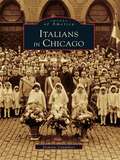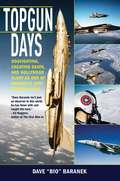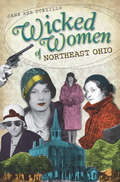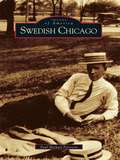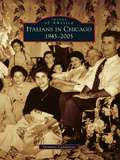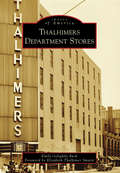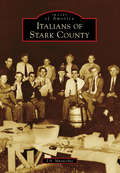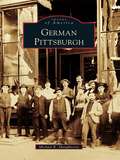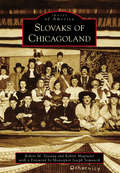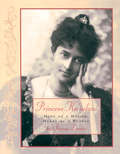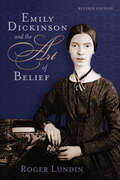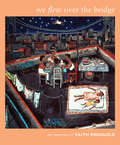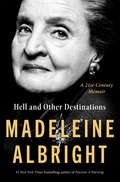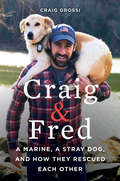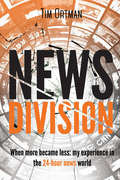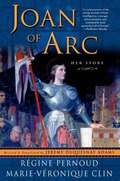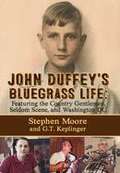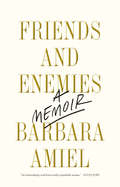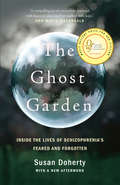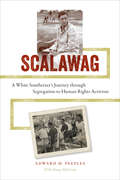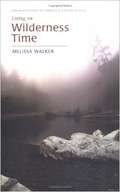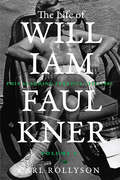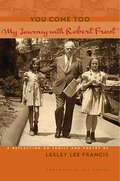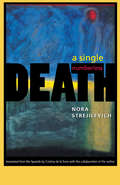- Table View
- List View
Italians in Chicago: 1945-2005 (Images of America)
by Dominic CandeloroThe stories of Chicago's Italian communities are an important part of the rich and diverse mosaic of Chicago history. As a rail center, an industrial center, and America's fastest growing major city, Chicago offered opportunities for immigrants from all nations. Italians in Chicago presents an intriguing narrative record of the earliest beginnings of Italian communities in the city, going back to the 1850s. It explores the lives of ten significant members of the Chicago Italian-American community.This book is a collaborative, cumulative effort, and gives glimpses and echoes of what occurred in the Italian-American past in Chicago. Including vintage images and tales of such individuals as Father Armando Pierini, Anthony Scariano, and Joe Bruno, and groups such as the Aragona Club and the Maria Santissima Lauretana Society, this collection uncovers the challenges and triumphs of these Italian immigrants.
Topgun Days: Dogfighting, Cheating Death, and Hollywood Glory as One of America's Best Fighter Jocks
by Dave BaranekDave Baranek (callsign "Bio") was one of 451 young men to receive his Wings of Gold in 1980 as a naval flight officer. Four years later, seasoned by intense training and deployments in the tense confrontations of the cold war, he became the only one of that initial group to rise to become an instructor at the navy's elite Fighter Weapons School. As a Topgun instructor, Bio was responsible for teaching the best fighter pilots of the Navy and Marine Corps how to be even better. He schooled them in the classroom and then went head-to-head with them in the skies.Then, in August 1985, Bio was assigned to combine his day-to-day flight duties with participation in a Pentagon-blessed project to film action footage for a major Hollywood movie focusing on the lives, loves, heartbreaks, and triumphs of young fighter pilots: Top Gun.Bio soon found himself riding in limousines to attend gala premieres, and being singled out by giggling teenagers and awed schoolboys who recognized the name "Topgun" on his T-shirts. The book ends with his reflections on his career as a skilled naval aviator and his enduring love of flight. The paperback and Kindle editions include more than fifty rare full color photographs of fighter jets in action.
Solving the West Palm Beach Murder of Jeffrey Heagerty (True Crime)
by Graham BrunkJeffrey Heagerty was like most young gay nineteen-year-olds in South Florida in the 1980s, commonly finding himself and his friends at the popular Kevin's Cabaret in West Palm Beach on Saturday nights. On one of those Saturday nights in 1984, Jeff vanished from the club, leaving his friends behind even though he was their ride home. His body was found dumped in a canal the next morning and his car was missing, only to be found a month later, abandoned on the other side of town. Rumors of a love triangle, drug dealings and sexual encounters snarled police efforts at solving the case. The investigation stagnated and the case grew cold until the solution came from two unexpected sources: overlooked details in police photographs of Jeff's car and a mysterious letter from an inmate in the Palm Beach County Jail.
Wicked Women of Northeast Ohio (Wicked)
by Jane Ann TurzilloIn Wicked Women of Northeast Ohio, author Jane Ann Turzillo recounts the misdeeds of ten dark-hearted women who refused to play by the rules. They unleashed their most base impulses using axes, guns, poison and more. You'll meet Perry's Velma West, a mere slip of a girl who was unfortunately too near a hammer during an argument. New Philadelphia's Ellen Athey, no lady herself, had a similar problem with an axe. Ardell Quinn, who operated the longest-running brothel in Cleveland, would simply argue that she was a good businesswoman. Grim? Often. Entertaining? Deliciously so.
Swedish Chicago (Images of America)
by Paul Michael PetersonAt the turn of the 20th century, Chicago was home to the largest Swedish population of any city in the world outside of Stockholm. In the 1920s, Sweden experienced an economic depression and population growth that sparked another rush of Swedish immigration to America and Chicago, where they settled in large numbers in Andersonville and North Park. Chicago has been home to many famous and influential Swedes, including writers Carl Sandburg and Nelson Algren, and builder and developer Andrew Lanquist, who gave us both Wrigley Field and the Wrigley Building. Tour Chicago's Swedish heritage, from the great waves of migration to the present day, through vintage photographs in Swedish Chicago.
Italians in Chicago: 1945-2005 (Images of America)
by Dominic CandeloroMore than 25,000 Italian immigrants came to Chicago after 1945. The story of their exodus and reestablishment in Chicago touches on war torn Italy, the renewal of family and paesani connections, the bureaucratic challenges of the restrictive quota system, the energy and spirit of the new immigrants, and the opportunities and frustrations in American society. Drawn from scores of family albums, these intimate snapshots tell the story of the unique and universal saga of immigration, a core theme in American and Italian history.
Thalhimers Department Stores (Images of America)
by Emily Golightly Rusk Elizabeth Thalhimer SmarttThalhimers was founded in Richmond in 1842 by German Jewish immigrant William Thalhimer as a humble dry goods store. It expanded over the years to become a 26-store chain across the Southeast under the leadership of William's great-grandson, William B. Thalhimer Jr. It boasted the latest in clothing, shoes, and accessories for the entire family, the most modern of housewares, and gourmet foods and baked goods, including the iconic six-layer chocolate cake. Through decades of dramatic political and social change, Thalhimers stood strong, guided by the overarching philosophies of honesty, integrity, quality, and service. Loyal and devoted employees were the heart of Thalhimers, becoming part of the extended Thalhimer family. Sadly, in 1992, as a result of retail consolidation, the Thalhimer name was dropped and the flagship downtown Richmond store closed. A 150-year legacy ended, leaving behind cherished memories, stories, and images.
Italians of Stark County (Images of America)
by J. A. MusacchiaImages of America: Italians of Stark County focuses on Italian immigration into Stark County beginning in the late 1800s. At the time, Stark County's urban hub of Canton and the surrounding communities were in the middle of a thriving expansion driven by industry, transportation, and manufacturing. Along with this growth came the need for labor, with immigration filling many of those needs. Italians came to Stark County to work in the steel mills, in the coal mines, and on the railroad, as well as to start their own small businesses. Once established, Italian families began to replicate the community foundations from their native land, and in turn these foundations reinforced embedded values: family, food, religion, music, and freedom.
German Pittsburgh (Images of America)
by Michael R. ShaughnessyGerman Pittsburgh explores the multifaceted cultural history of German-speaking immigrants and residents in the Greater Pittsburgh area. Today over one quarter of the city's residents claim German heritage, the largest ethnic group in the region. German-speaking Pittsburghers include names like H. J. Heinz, Honus Wagner, and the Kaufmanns, and they produced beloved Pittsburgh beers such as Iron City and Penn Pilsner. It might be surprising to know that German was an official language of the city at one time, and a daily German newspaper was printed from the mid-1800s up through World War II. Today remnants of the German-speaking community can be found on the North Side, the South Side, Troy Hill, and Mount Oliver, to name a few. German Pittsburgh provides an overview of the contributions that this diverse ethnic community has made and is making today in the city.
Slovaks of Chicagoland (Images of America)
by Robert M. Fasiang Robert Magruder Monsignor Joseph SemancikThe story of Slovak Americans in Chicagoland is a tale of the American dream. In a few short years, emigrants from Slovakia with little to their names came to the United States and succeeded beyond their highest hopes. This fascinating story of "rags to riches" has been documented in historical photographs in Images of America: Slovaks of Chicagoland. Many Slovaks came to America with few assets, no more than a sixth-grade education, and no knowledge of the English language. They went to school and became naturalized citizens. Many took menial jobs in stockyards, steel mills, and oil refineries. They saved their money and opened grocery stores, banks, construction firms, and other businesses. Slovaks built beautiful churches, quality schools, and recreational facilities. They raised their families to be proud Americans and incorporated traditions from Slovakia into their daily lives, including the important role of religion.
Princess Ka'iulani: Hope of a Nation, Heart of a People (Women Of Spirit Ser.)
by Sharon LinneaOn March 1, 1893, Princess Ka’iulani, the seventeen-year-old crown princess of Hawaii, stepped onto the pier at New York City. She was greeted by a crowd of reporters and onlookers who knew that, in many ways, she stood at a crossroads in history. Fully aware of the significance of her visit, she prayed that she could help persuade the American government to return her beautiful islands to the Hawaiian people. This biography tells the fascinating—and little-known—story of Princess Ka’iulani’s life and courageous fight for Hawaiian independence. Using many newly translated journals and letters, Sharon Linnéa introduces young readers to the most beloved figure in Hawaiian history, and one of America’s most overlooked Christian heroines.
Emily Dickinson and the Art of Belief (Library of Religious Biography (LRB))
by Roger LundinGarnering awards from Choice, Christianity Today, Books & Culture, and the Conference on Christianity and Literature when first published in 1998, Roger Lundin's Emily Dickinson and the Art of Belief has been widely recognized as one of the finest biographies of the great American poet Emily Dickinson. Paying special attention to her experience of faith, Lundin skillfully relates Dickinson's life -- as it can be charted through her poems and letters -- to nineteenth-century American political, social, religious, and intellectual history. This second edition of Lundin's superb work includes a standard bibliography, expanded notes, and a more extensive discussion of Dickinson's poetry than the first edition contained. Besides examining Dickinson's singular life and work in greater depth, Lundin has also keyed all poem citations to the recently updated standard edition of Dickinson's poetry. Already outstanding, Lundin's biography of Emily Dickinson is now even better than before., the volume begins with a look at early christology and covers the whole of the New Testament from the Gospels to Revelation.
We Flew over the Bridge: The Memoirs of Faith Ringgold
by Faith RinggoldIn We Flew over the Bridge, one of the country’s preeminent African American artists—and award-winning children’s book authors—shares the fascinating story of her life. Faith Ringgold’s artworks—startling “story quilts,” politically charged paintings, and more—hang in the Studio Museum in Harlem, the Metropolitan Museum of Art, the Guggenheim Museum, the Museum of Modern Art, and other major museums around the world, as well as in the private collections of Maya Angelou, Bill Cosby, and Oprah Winfrey. Her children’s books, including the Caldecott Honor Book Tar Beach, have sold hundreds of thousands of copies. But Ringgold’s path to success has not been easy. In this gorgeously illustrated memoir, she looks back and shares the story of her struggles, growth, and triumphs. Ringgold recollects how she had to surmount a wall of prejudices as she worked to refine her artistic vision and raise a family. At the same time, the story she tells is one of warm family memories and sustaining friendships, community involvement, and hope for the future.
Hell and Other Destinations: A 21st-Century Memoir
by Madeleine AlbrightSix-time New York Times bestselling author and former Secretary of State Madeleine Albright—one of the world’s most admired and tireless public servants—reflects on the final stages of one’s career, and working productively into your later decades in this revealing, funny, and inspiring memoir. <P><P>In 2001, when Madeleine Albright was leaving office as America’s first female secretary of state, interviewers asked her how she wished to be remembered. “I don’t want to be remembered,” she answered. “I am still here and have much more I intend to do. As difficult as it might seem, I want every stage of my life to be more exciting than the last. <P><P>”In that time of transition, the former Secretary considered the possibilities: she could write, teach, travel, give speeches, start a business, fight for democracy, help to empower women, campaign for favored political candidates, spend more time with her grandchildren. Instead of choosing one or two, she decided to do it all. <P><P>For nearly twenty years, Albright has been in constant motion, navigating half a dozen professions, clashing with presidents and prime ministers, learning every day. Since leaving the State Department, she has blazed her own trail—and given voice to millions who yearn for respect, regardless of gender, background, or age. <P><P>Hell and Other Destinations reveals this remarkable figure at her bluntest, funniest, most intimate, and most serious. It is the tale of our times anchored in lessons for all time, narrated by an extraordinary woman with a matchless zest for life. <P><P><b>A New York Times Bestseller</b>
Craig & Fred: A Marine, A Stray Dog, and How They Rescued Each Other
by Craig GrossiThe uplifting and unforgettable true story of a US Marine, the stray dog he met on an Afghan battlefield, and how they saved each other and now travel America together, "spreading the message of stubborn positivity."In 2010, Sergeant Craig Grossi was doing intelligence work for Marine RECON—the most elite fighters in the Corps—in a remote part of Afghanistan. While on patrol, he spotted a young dog "with a big goofy head and little legs" who didn’t seem vicious or run in a pack like most strays they’d encountered. After eating a piece of beef jerky Craig offered—against military regulations—the dog began to follow him. "Looks like you made a friend," another Marine yelled. Grossi heard, "Looks like a 'Fred.'" The name stuck, and a beautiful, life-changing friendship was forged.Fred not only stole Craig’s heart; he won over the RECON fighters, who helped Craig smuggle the dog into heavily fortified Camp Leatherneck in a duffel bag—risking jail and Fred’s life. With the help of a crew of DHL workers, a sympathetic vet, and a military dog handler, Fred eventually made it to Craig’s family in Virginia. Months later, when Craig returned to the U.S., it was Fred’s turn to save the wounded Marine from Post-Traumatic Stress. Today, Craig and Fred are touching lives nationwide, from a swampy campground in a Louisiana State Park to the streets of Portland, Oregon, and everywhere in between. A poignant and inspiring tale of hope, resilience, and optimism, with a timeless message at its heart—"it is not what happens to us that matters, but how we respond to it"—Craig & Fred is a shining example of the power of love to transform our hearts and our lives.
News Division: When more became less: my experience in the 24-hour news world (News Memoir)
by Tim OrtmanWhat constitutes unbiased information vs. opinion disguised as facts? Why and how has what we watch become diluted, dramatized, and polarized? How have we arrived at this point? What was lost? What was gained? Through personal anecdotes, and a touch of humor, rooted in over 35 years of experience and laser-focused analysis, the author demonstrates how the television news landscape has changed and what this means for news gathering and reporting as well as for those watching at home. While the fringes on the left and the right expand, the unwavering center still delivers straightforward unbiased news, albeit packaged differently. The responsibility of discerning what we are taking in relies on us, the consumers: this book helps guide us to understand what we are being fed every day.
Joan Of Arc: Her Story
by Regine Pernoud Marie-Veronique Clin Jeremy DuQuesnay Adams Narue-Veronique ClinThe peasant girl who led an army against the English and placed Charles VII on the French throne has inspired countless books since her death at age 19. While others have claimed Joan the Maid (as she called herself) for every cause from feminism to working-class radicalism, this meticulous volume by two French scholars sticks close to the known facts. The authors make extensive use of contemporary documents that bring to life the turbulent political scene in which Joan operated as well as her forceful personality. Joan followed the directives of voices she believed were sent to her by God; her deep piety, self-assurance, decisiveness, and shrewd intelligence radiate from her letters and from her responses to hostile questioning at the rigged trial that resulted in her being burned alive as a heretic in 1431. General readers may be intimidated at first by a detailed narrative studded with lengthy quotations, but those who persevere will discover a story all the more moving because it is not manipulated to make a modern-day point. This English translation updates the 1986 French volume's bibliography, supplements the biographies in part 2 with sketches of historical figures less familiar outside of France, and generally makes the book more accessible for English-language readers. --Wendy Smith.
John Duffey’s Bluegrass Life: Featuring the Country Gentlemen, Seldom Scene, and Washington, D.C.
by Stephen Moore G. T. KeplingerIt has been 22 years since we lost the great John Duffey, the father of modern bluegrass music. He still looms large in the minds of those who knew him and those who saw him perform. Those who came to love bluegrass since never got the chance to experience his power first-hand. Hopefully, this book will give them an understanding of the unique larger-than-life character that was John Duffey. Fortunately, there are plenty of recordings and some videos still available to give a clue. John’s creative influence is heard and felt in the two main bands that he fronted, The Country Gentlemen and The Seldom Scene. These bands created the Washington sound, a newer, more cosmopolitan approach to a genre that had been invented by rural southern and Appalachian musicians in the 1940s. John co-founded The Country Gentlemen in 1957, stayed with them until 1969. In 1971, he was coaxed back into performing to help found The Seldom Scene. John remained with the Scene until his death in December 1996. I have been fortunate to have been a band mate of John’s in both of those bands. There are so many Duffey stories that need to be retold lest they be lost. This book will help fill the void and make him come alive in the minds of the reader.” -- Tom Gray, BLUEGRASS MUSIC HALL OF FAMER Stephen Moore has co-authored four books, Helen Hayes: A Bio-Bibliography, Johnny Holliday: From Rock to Jock, Hoop Tales: Maryland Terrapins, and Cerphe's Up. A research technologist at Georgetown University, he plays in the Maryland rock cover band The Razors. G.T. Keplinger is a long-time bluegrass fan, historian, and archivist. His MFA thesis project was a documentary on The Seldom Scene. An Associate Professor of film at Stevenson University, he lives in Towson, MD with his wife, two children, and their long-haired dachshund.
Friends and Enemies: A Memoir
by Barbara AmielBarbara Amiel's much-talked-about life has been a subject of endless fascination for the media, many unauthorized biographies, as well as screen depictions. An instinctive feminist and now a foe of feminism's political correctness, she covers a formidable array of experiences--political, sexual, marital, and material--in these memoirs.Born in London during World War II's Blitz, the only consistent strains in her life were a fi erce belief in her identity as a Jew, even as the Jewish community disowned her, and an unquestioned view that women were free to do anything in any arena they chose without the need to win society's approval. Which she very often did not.Her rise to the senior rungs of journalism began in Canada after the emigration of her family and continued in the United Kingdom on her return. With four marriages and an assorted number of beaus, some famous, some infamous (some rather young, some rather elderly), she moved through different worlds, encountering problems made more intractable on occasion by her own faulty choices.Though her views on political and social issues were controversial and unpopular, it is a measure of her writing skill that she held down plum jobs for many decades in Canadian and British journalism, as well as appearances in U.S. publications ranging from the Wall Street Journal and the New York Times to the National Enquirer and Vogue.When Barbara Amiel's family life broke apart in her early teens, she faced problems solved without the benefi t of parentalguidance in moments that are often hilarious as well as touching. As an adult and a writer of unabashedly libertarian views, she was derided as much for her wardrobe as for her ideas. Promoted by Maclean's magazine with the slogan "Love her or hate her," she was philosophical. "I love liberty, opera, sex, and fashion," she once told an interviewer. "But life would have been easier if my passions had been for trainspotting and stamp collecting."Her life has an operatic quality played out against a backdrop of physical and mental difficulties with a wildly diverse castincluding Elton John, Henry Kissinger, Anna Wintour, Oscar de la Renta, Princess Diana, Tom Stoppard, Brooke Astor, Margaret Thatcher, Gianni Agnelli, David Frost, and an array of the aristocrats of Manhattan and the stately homes of England. All handled, she writes "with my fatal combination of naiveté and self-absorption." The epic battle with the U.S. justice system leading to the trial and imprisonment of her husband, Conrad Black (eventually substantially vindicated), became a litmus paper for sorting out friends from those who were quick to judge and brutal in their dismissal. Friends and Enemies is not a book of vengeance but an attempt to fi nd her own truth: a life that reads like a novel--eloquent, surprising, written with deeply personal candour and utterly unputdownable.
The Ghost Garden: Inside the lives of schizophrenia's feared and forgotten
by Susan DohertyA rare work of narrative non-fiction that illuminates a world most of us try not to see: the daily lives of the severely mentally ill, who are medicated, marginalized, locked away and shunned.Susan Doherty's groundbreaking book brings us a population of lost souls, ill-served by society, feared, shunted from locked wards to rooming houses to the streets to jail and back again. For the past ten years, some of the people who cycle in and out of the severely ill wards of the Douglas Institute in Montreal, have found a friend in Susan, who volunteers on the ward, and then follows her friends out into the world as they struggle to get through their days. With their full cooperation, she brings us their stories, which challenge the ways we think about people with mental illness on every page. The spine of the book is the life of Caroline Evans (not her real name), a woman in her early sixties whom Susan has known since she was a bright and sunny school girl. Caroline had formed a close friendship with Susan and shared stories from her life; through her, we experience what living with schizophrenia over time is really like. She has been through it all, including the way the justice system treats the severely mentally ill: at one point, she believed that she could save her roommate from the devil by pouring boiling water into her ear... Susan interleaves Caroline's story with vignettes about her other friends, human stories that reveal their hopes, their circumstances, their personalities, their humanity. She's found that if she can hang in through the first ten to fifteen minutes of every coffee date with someone in the grip of psychosis, then true communication results. Their "madness" is not otherworldly: instead it tells us something about how they're surviving their lives and what they've been through. The Ghost Garden is not only touching, but carries a cargo of compassion and empathy.
Scalawag: A White Southerner's Journey through Segregation to Human Rights Activism
by James H. Hershman Jr. Nancy Maclean Edward H. PeeplesScalawag tells the surprising story of a white working-class boy who became an unlikely civil rights activist. Born in 1935 in Richmond, where he was sent to segregated churches and schools, Ed Peeples was taught the ethos and lore of white supremacy by every adult in his young life. That message came with an equally cruel one--that, as the child of a wage-earning single mother, he was destined for failure.But by age nineteen Peeples became what the whites in his world called a "traitor to the race." Pushed by a lone teacher to think critically, Peeples found his way to the black freedom struggle and began a long life of activism. He challenged racism in his U.S. Navy unit and engaged in sit-ins and community organizing. Later, as a university professor, he agitated for good jobs, health care, and decent housing for all, pushed for the creation of African American studies courses at his university, and worked toward equal treatment for women, prison reform, and more. Peeples did most of his human rights work in his native Virginia, and his story reveals how institutional racism pervaded the Upper South as much as the Deep South.Covering fifty years' participation in the long civil rights movement, Peeples's gripping story brings to life an unsung activist culture to which countless forgotten individuals contributed, over time expanding their commitment from civil rights to other causes. This engrossing, witty tale of escape from what once seemed certain fate invites readers to reflect on how moral courage can transform a life.
Living on Wilderness Time
by Melissa WalkerMelissa Walker set out on a journey that many women of her generation have mapped only in their dreams. Like many American chroniclers before her who have surrendered to the aimless pleasures of the road, Walker had no geographical destination in mind, but she did have two definite goals--one personal, one political--for her journey. She was looking for the peace and solitude of the backcountry, certainly, but she also wanted to learn the dynamics of preserving wild places and to devote herself to that cause. In the Sky Islands of southern Arizona, on the banks of the Popo Agie River and the Wind River Mountains in Wyoming, in Yellowstone, Grand Teton, Rocky Mountain, and Olympic National Park, in Gila and Glacier Peak Wilderness, she encountered the hazards of wild animals and extreme weather, and she began to reassess what parts of her life she could control. Living on Wilderness Time is a book for those who have visited wild places and want to return, and for others whose overcommitted urban lives make them long for land where time is measured differently and human beings are scarce. Above all it is a call to join those who, like Aldo Leopold, see wilderness as vital to the human community.Melissa Walker is vice president of National Wilderness Watch, chair of the Georgia chapter of Wilderness Watch, serves on the Southern Appalachian Council of the Wilderness Society, and is the author of Reading the Environment and Down from the Mountaintop. She has been Professor of English at the University of New Orleans and Mercer University and a fellow of Women's Studies at Emory University. Walker lives with her husband in Atlanta, Georgia.
The Life of William Faulkner: This Alarming Paradox, 1935–1962
by Carl RollysonBy the end of volume 1 of The Life of William Faulkner ("A filling, satisfying feast for Faulkner aficianados"— Kirkus), the young Faulkner had gone from an unpromising, self-mythologizing bohemian to the author of some of the most innovative and enduring literature of the century, including The Sound and the Fury and Light in August. The second and concluding volume of Carl Rollyson’s ambitious biography finds Faulkner lamenting the many threats to his creative existence. Feeling, as an artist, he should be above worldly concerns and even morality, he has instead inherited only debts—a symptom of the South’s faded fortunes—and numerous mouths to feed and funerals to fund. And so he turns to the classic temptation for financially struggling writers—Hollywood. Thus begins roughly a decade of shuttling between his home and family in Mississippi—lifeblood of his art—and the backlots of the Golden Age film industry. Through Faulkner’s Hollywood years, Rollyson introduces such personalities as Humphrey Bogart and Faulkner’s long-time collaborator Howard Hawks, while telling the stories behind films such as The Big Sleep and To Have and Have Not. At the same time, he chronicles with great insight Faulkner's rapidly crumbling though somehow resilient marriage and his numerous extramarital affairs--including his deeply felt, if ultimately doomed, relationship with Meta Carpenter. (In his grief over their breakup, Faulkner—a dipsomaniac capable of ferocious alcoholic binges—received third-degree burns when he passed out on a hotel-room radiator.) Where most biographers and critics dismiss Faulkner’s film work as at best a necessary evil, at worst a tragic waste of his peak creative years, Rollyson approaches this period as a valuable window on his artistry. He reveals a fascinating, previously unappreciated cross-pollination between Faulkner’s film and literary work, elements from his fiction appearing in his screenplays and his film collaborations influencing his later novels—fundamentally changing the character of late-career works such as the Snopes trilogy. Rollyson takes the reader on a fascinating journey through the composition of Absalom, Absalom!, widely considered Faulkner’s masterpiece, as well as the film adaptation he authored—unproduced and never published— Revolt in the Earth. He reveals how Faulkner wrestled with the legacy of the South—both its history and its dizzying racial contradictions—and turned it into powerful art in works such as Go Down, Moses and Intruder in the Dust. Volume 2 of this monumental work rests on an unprecedented trove of research, giving us the most penetrating and comprehensive life of Faulkner and providing a fascinating look at the author's trajectory from under-appreciated "writer's writer" to world-renowned Nobel laureate and literary icon. In his famous Nobel speech, Faulkner said what inspired him was the human ability to prevail. In the end, this beautifully wrought life shows how Faulkner, the man and the artist, embodies this remarkable capacity to endure and prevail.
You Come Too: My Journey with Robert Frost
by Jay Parini Lesley Lee FrancisRobert Frost observed in his wife, Elinor, a desire to live "a life that goes rather poetically." The same could be said of many members of the Frost family, over several generations. In You Come Too, Frost's granddaughter, Lesley Lee Francis, combines priceless personal memories and rigorous research to create a portrait of Frost and the women, including herself, whose lives he touched.Francis provides a vivid picture of Frost the family man, revealing him to be intensely engaged rather than the aloof artist that is commonly portrayed. She shares with us the devastation Frost and Elinor experienced when faced with tragic illnesses, both physical and mental, and the untimely death of family members. Elinor's own death added to the poet's despair and unleashed complex feelings throughout the family. (Francis's mother would lament the toll taken on Elinor by what she perceived as Frost's "selfishness" in the life he had chosen.)This is also the story of Lesley Frost, Francis's remarkable mother, who struggled to emerge from her celebrated father's shadow, while, as one of the people closest to him, sharing his intuitive impulse to write and to indulge their mutual love of books and poetry. Francis would herself become yet another writer and, like her grandfather and mother before her, a teacher--despite sharing Frost's sense of being "imperfectly academic." In addition, Francis explores Frost's professional relationships with women outside the family, such as the poets Harriet Monroe, Amy Lowell, and Susan Hayes Ward.Francis's invaluable insights into Frost's poetry and her inclusion of previously unpublished family writings and photographs make this book essential to Frost scholarship. But You Come Too will appeal to anyone interested in this great poet's life and work. It also reveals unforgettable stories of strong, independent women and their passion to create and share poetry.
A Single, Numberless Death
by Nora StrejilevichNora Strejilevich was a young woman when her brother and other family members and friends disappeared at the hands of the military junta that held power in Argentina from 1976 to 1983. Ostensibly part of a systematic campaign to eliminate left-wing terrorism, the violence perpetrated by the junta far exceeded anything the leftists ever dreamed of, enveloping not only the violent left but other dissidents and innocent civilians as well, and particularly targeting the Jewish population. A desaparecida herself, Strejilevich survived kidnapping and torture to speak of her experience with a dignified voice and a clear-eyed realism that extends from one end of the political spectrum to the other.In the first English translation of her elegant fictional memoir Una sola muerte numerosa, Strejilevich combines autobiography, documentary journalism, fiction, magical realism, and poetry to express the "choir of voices" of the more than 30,000 souls who were imprisoned and abused. She engages the reader in the history of a bloody military coup and state-sanctioned anti-Semitism, exploring themes of exile, identity, and violence. Above all, A Single, Numberless Death is Nora Strejilevich’s gripping story of survival.
